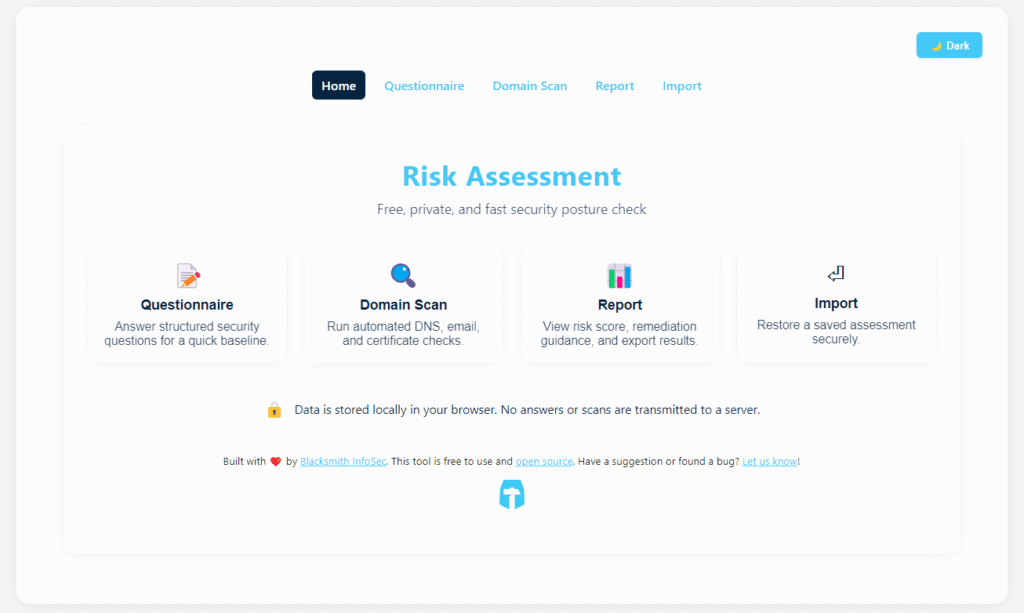Navigating compliance is not optional for many organizations operating in the United States — and the number of businesses affected by regulations is growing. As it stands, U.S. businesses must adhere to a wide range of federal, state, and local regulations that govern everything from data privacy and workplace safety to tax reporting and employment practices. But maintaining compliance is not just a legal obligation — it is vital for safeguarding your company’s reputation, protecting against costly fines and penalties, and ensuring data privacy and cybersecurity.
Failure to comply with applicable U.S. regulations can result in severe consequences, including financial penalties, legal action, operational disruptions, and even the loss of your business license. As regulations frequently change and vary by industry and jurisdiction, staying informed and proactive is crucial for long-term business success.
This article addresses the most frequently asked questions about compliance for businesses in the United States, providing clear answers to help you understand your obligations and avoid common pitfalls.
Go to Answer:
-
What Are the Most Common Compliance Requirements for Businesses in the United States?
-
How Can My Company Ensure Ongoing Compliance with U.S. Regulations?
-
What Are the Consequences of Non-Compliance for Businesses in the United States?
-
What Records Must U.S. Businesses Maintain, and For How Long?
-
How Should U.S. Businesses Handle Data Privacy and Security Compliance?
-
What Are the Best Practices for Compliance Training in U.S. Businesses?
-
How Should U.S. Businesses Manage Third-Party or Vendor Compliance?
-
What Should Be Included in Compliance Policies and Procedures for U.S. Businesses?
-
How Can Small Businesses in the U.S. Manage Compliance with Limited Resources?
What Are the Most Common Compliance Requirements for Businesses in the United States?
Businesses operating in the U.S. must comply with a variety of federal, state, and sometimes local regulations. Some of the most common compliance requirements include:
-
Data Privacy and Security:
While the U.S. does not have a single comprehensive data privacy law like the EU’s GDPR, federal laws such as the Health Insurance Portability and Accountability Act (HIPAA) for healthcare, the Gramm-Leach-Bliley Act (GLBA) for financial institutions, and the Children’s Online Privacy Protection Act (COPPA) set strict standards for protecting personal information. Several states, including California (CCPA and CPRA), Virginia (VCDPA), Colorado (CPA), and others, have also enacted their own state-level data privacy laws. -
Workplace Safety:
The Occupational Safety and Health Administration (OSHA) enforces workplace safety standards to protect employees from hazards on the job. -
Employment Laws:
Businesses must comply with a range of employment-related regulations, such as the Fair Labor Standards Act (FLSA) for minimum wage and overtime, Title VII of the Civil Rights Act for anti-discrimination, the Family and Medical Leave Act (FMLA), and Americans with Disabilities Act (ADA) requirements. -
Tax and Financial Reporting:
The Internal Revenue Service (IRS) governs tax compliance, while the Securities and Exchange Commission (SEC) regulates financial reporting for public companies. -
Industry-Specific Regulations:
Depending on the sector, additional regulations may apply — for example, the Food and Drug Administration (FDA) for food and pharmaceuticals, or the Environmental Protection Agency (EPA) for environmental compliance.
Understanding and meeting these requirements is essential for avoiding penalties and maintaining a trustworthy business reputation.
How Can My Company Ensure Ongoing Compliance with Regulations?
Ensuring ongoing compliance with U.S. regulations is a proactive process that requires attention to detail and regular review. Here are key steps your company can take:
-
Appoint a Compliance Officer or Team:
Designate a person or group responsible for monitoring regulatory changes and ensuring that your business meets all legal requirements. - Work with a Compliance-Forward MSP or vCISO: Your managed IT service provider can help with IT and data compliance, while the right virtual Chief Information Security Officer (vCISO) can work with you to manage risk and implement tailored security programs.
-
Regularly Update Policies and Procedures:
Review and revise your internal policies to reflect current federal, state, and local laws. This includes updating employee handbooks, data privacy policies, and workplace safety protocols. -
Conduct Internal Audits and Risk Assessments:
Perform regular checks to identify compliance gaps and potential risks before they become issues. -
Provide Employee Training:
Train staff on relevant regulations, such as data protection, workplace safety, and anti-discrimination laws. Offer refresher courses and update training materials as laws change. -
Use Compliance Management Tools:
Leverage software or platforms designed to track regulatory changes, manage documentation, and automate compliance tasks. -
Stay Informed on Regulatory Updates:
Subscribe to newsletters from compliance experts and regulatory agencies, join industry associations, and attend relevant webinars or conferences.
By following these best practices, your business can minimize compliance risks and respond effectively to new regulatory challenges in the U.S. landscape.
What Are the Consequences of Non-Compliance for Businesses in the United States?
Failing to comply with U.S. regulations can have serious consequences for businesses of all sizes. Here are some of the most significant risks:
-
Fines and Legal Penalties:
Regulatory agencies such as the IRS, OSHA, EPA, and FTC can impose substantial fines for violations. Some penalties can reach hundreds of thousands or even millions of dollars, depending on the severity and frequency of the infraction. -
Loss of Licenses or Permits:
Certain industries require specific licenses or permits to operate. Non-compliance can result in the suspension or revocation of these critical credentials, effectively shutting down business operations. -
Reputational Damage:
News of non-compliance can harm your company’s reputation, eroding customer trust and potentially leading to lost sales or partnerships. -
Operational Disruptions:
Investigations, lawsuits, or enforcement actions can disrupt day-to-day business activities, diverting resources away from growth and innovation. -
Legal Action and Lawsuits:
Employees, customers, or other stakeholders may file lawsuits for damages related to non-compliance, such as workplace safety violations or privacy breaches. -
Increased Scrutiny:
Once a business is found non-compliant, it may face increased regulatory scrutiny in the future, leading to more frequent audits or inspections.
Staying compliant is not only a legal obligation but also a safeguard for your business’s financial health and reputation.
How Do I Keep Up With Changing Regulations?
Staying current with evolving regulations is a critical responsibility for U.S. businesses. Here are practical ways to ensure you remain informed and compliant:
-
Subscribe to Regulatory Updates:
Sign up for newsletters and alerts from federal agencies such as the Department of Labor (DOL), OSHA, FTC, and IRS. Many agencies offer free email updates about new rules and guidance. -
Join Professional and Industry Associations:
Industry groups often provide regulatory summaries, webinars, and networking opportunities that help members stay ahead of changes. -
Attend Compliance Seminars and Follow Expert Content Creators:
Participate in training sessions hosted by legal experts, industry organizations, or regulatory agencies to learn about new laws and best practices. Follow compliance podcasts and streams to hear directly from experts in regulatory compliance. -
Use the Right Tools:
Invest in compliance management software or online platforms that track regulatory changes and help you manage documentation, deadlines, and compliance tasks. -
Consult Legal or Compliance Professionals:
Work with attorneys or compliance consultants who specialize in your industry to interpret new regulations and advise on implementation. -
Monitor State and Local Government Websites:
Many states and municipalities publish updates to their laws and regulations online, which is especially important if you operate in multiple locations.
What Records Must U.S. Businesses Maintain, and For How Long?
U.S. businesses are required to keep a variety of records to demonstrate compliance with federal, state, and sometimes local laws. The specific documents and retention periods depend on the type of record and the applicable regulations, but here are some general guidelines:
-
Personnel and Employment Records:
-
Examples: Job applications, employee contracts, performance reviews, disciplinary actions, I-9 forms, and payroll records.
-
Retention Period: Typically, at least three years after employment ends for most records. I-9 forms must be kept for three years after hire or one year after termination, whichever is later.
-
-
Payroll and Tax Records:
-
Examples: Timesheets, wage records, tax filings, and supporting documentation.
-
Retention Period: The IRS generally recommends keeping tax records for at least three years from the date you file your return. However, some records (such as those related to depreciation or asset purchases) should be kept longer — sometimes up to seven years or more.
-
-
Compliance and Audit Documentation:
-
Examples: Safety training logs, workplace incident reports, compliance policies, and internal audit reports.
-
Retention Period: OSHA requires certain safety and health records to be kept for five years, while other compliance documents may have different requirements depending on the regulation.
-
-
Financial and Business Records:
-
Examples: Invoices, contracts, bank statements, and business licenses.
-
Retention Period: Typically five to seven years, but some contracts or legal documents should be retained indefinitely.
-
Always check the specific requirements for your industry and the states where you operate, as retention periods can vary. Maintaining well-organized records not only helps you comply with the law but also protects your business in case of audits or disputes.
How Should U.S. Businesses Handle Data Privacy and Security Compliance?
U.S. businesses must navigate a complex and evolving landscape of data privacy and security laws. While there is no single federal data privacy law covering all businesses, multiple sector-specific and state regulations impose strict requirements:
-
Federal Laws:
-
HIPAA: Applies to healthcare providers and related entities, requiring protection of patient health information.
-
GLBA: Applies to financial institutions, mandating safeguards for customer financial data.
-
COPPA: Protects the privacy of children under 13 online and applies to operators of websites and online services directed to children.
-
-
State Laws:
-
California (CCPA/CPRA): Requires businesses to disclose data collection practices and gives consumers rights to access, delete, and opt out of the sale of their personal information.
-
Virginia (VCDPA), Colorado (CPA), Connecticut (CTDPA), and others: Have enacted comprehensive privacy laws with similar requirements for transparency, consumer rights, and data protection.
-
-
Best Practices:
-
Implement Robust Data Protection Policies: Establish clear policies for collecting, storing, and sharing personal data.
-
Limit Access to Sensitive Information: Restrict access to personal data to only those employees who need it for their job.
-
Conduct Regular Cybersecurity Training: Educate employees on recognizing and preventing security threats such as phishing and malware.
-
Perform Regular System Tests: Conduct vulnerability assessments and penetration testing to identify and address security weaknesses.
-
Report Data Breaches Promptly: Comply with state and federal breach notification laws by reporting incidents as required, often within specific timeframes.
-
Staying current with both federal and state privacy regulations is essential to avoid fines, legal action, and reputational damage. Regularly review and update your data privacy and security practices to reflect new laws and emerging threats.
What Are the Best Practices for Compliance Training?
Effective compliance training is essential for ensuring that employees understand their responsibilities under applicable regulations and can help your organization avoid costly violations. Here are key best practices for U.S. businesses:
-
Tailor Training to Roles and Risks:
Provide training that is relevant to each employee’s job function and the specific compliance risks they face. For example, HR staff need in-depth knowledge of employment laws, while IT staff require cybersecurity and data protection training. -
Use Engaging and Interactive Formats:
Incorporate real-life scenarios, quizzes, and interactive modules to increase engagement and retention. Consider using microlearning (short, focused sessions) and gamification to make training more effective. -
Track Participation and Understanding:
Monitor who completes training and assess their comprehension through quizzes or tests. Keep records of training completion for compliance audits. -
Update Training Regularly:
Regularly review and update training materials to reflect new laws, regulations, and company policies. This ensures that employees are always informed about current requirements. -
Provide Ongoing Education:
Offer refresher courses and updates throughout the year, not just during onboarding. This helps reinforce important concepts and keeps compliance top of mind. -
Encourage a Culture of Compliance:
Promote open communication about compliance issues and encourage employees to ask questions or report concerns without fear of retaliation.
How Should Businesses Manage Third-Party or Vendor Compliance?
Managing third-party and vendor compliance is crucial, as regulatory agencies increasingly hold companies accountable for the actions of their partners and suppliers. Here are best practices to ensure your vendors meet compliance standards:
-
Vet Vendors Thoroughly:
Before engaging with a vendor, conduct due diligence to assess their compliance with relevant federal and state regulations, such as data privacy, workplace safety, and anti-discrimination laws. -
Include Compliance Clauses in Contracts:
Require vendors to adhere to specific compliance obligations in written contracts. Clearly outline expectations for data protection, reporting requirements, and cooperation with audits or investigations. -
Conduct Periodic Audits:
Regularly review vendor practices and documentation to ensure ongoing compliance. This may include site visits, document reviews, or third-party assessments. -
Require Documentation of Compliance Efforts:
Ask vendors to provide evidence of their compliance programs, such as certifications, training records, or audit reports. -
Monitor Regulatory Changes Affecting Vendors:
Stay informed about new laws or regulations that may impact your vendors and update your requirements accordingly. -
Establish a Process for Addressing Non-Compliance:
Define clear steps for handling vendor non-compliance, including remediation plans or contract termination if necessary..
What Should Be Included in Compliance Policies and Procedures for U.S. Businesses?
Effective compliance policies and procedures are essential for ensuring that your business meets U.S. legal and regulatory requirements. Here’s what every business should consider when examining their policies and procedures:
-
Clear Definitions of Compliance Responsibilities:
Specify who is responsible for compliance within the organization, including roles for management, employees, and the compliance team. -
Detailed Procedures for Reporting and Investigating Violations:
Outline how employees can report potential compliance issues (such as anonymous hotlines or online reporting tools) and the process for investigating and resolving them. -
Guidelines for Risk Management and Incident Response:
Describe how the company identifies, assesses, and mitigates compliance risks. Include steps for responding to incidents such as data breaches, workplace accidents, or regulatory inquiries. -
Requirements for Recordkeeping and Documentation:
State which records must be maintained, how long they should be kept, and how they should be stored and protected. -
Training and Communication Protocols:
Explain how employees will be trained on compliance policies and how updates or changes will be communicated. -
Disciplinary Actions for Non-Compliance:
Clarify the consequences for failing to follow compliance policies, including potential disciplinary measures or termination. -
Regular Review and Updating of Policies:
Commit to reviewing and updating policies and procedures at least annually or whenever significant regulatory changes occur.
Well-documented and regularly updated compliance policies help protect your business from legal risks and foster a culture of accountability and integrity.
How Can Small Businesses in the U.S. Manage Compliance with Limited Resources?
Small businesses often face unique compliance challenges due to limited staff and budgets, but there are practical strategies to stay compliant without overextending resources:
-
Prioritize Key Compliance Areas:
Focus first on the most critical regulations affecting your industry (such as employment laws, tax requirements, and data privacy rules). -
Use Free or Low-Cost Tools:
Take advantage of free compliance checklists, templates, and guides from government agencies like the SBA, IRS, and Department of Labor. -
Automate Where Possible:
Consider affordable compliance management tools that help track deadlines, manage documentation, and send reminders for required actions. -
Leverage Industry Associations:
Join local or national business associations that offer compliance resources, training, and networking opportunities. -
Outsource Select Compliance Tasks:
For complex or highly specialized requirements (such as data privacy or HR compliance), consider outsourcing to MSPs, fractional CISOs, and other professionals as needed. -
Stay Organized and Document Everything:
Maintain clear records of all compliance efforts, training, and communications to simplify audits and inspections. -
Educate Yourself and Your Team:
Dedicate time to learning about relevant regulations and share knowledge with employees to foster a culture of compliance.
By following these steps, small businesses can manage compliance effectively, even with limited resources, and reduce the risk of costly violations.



